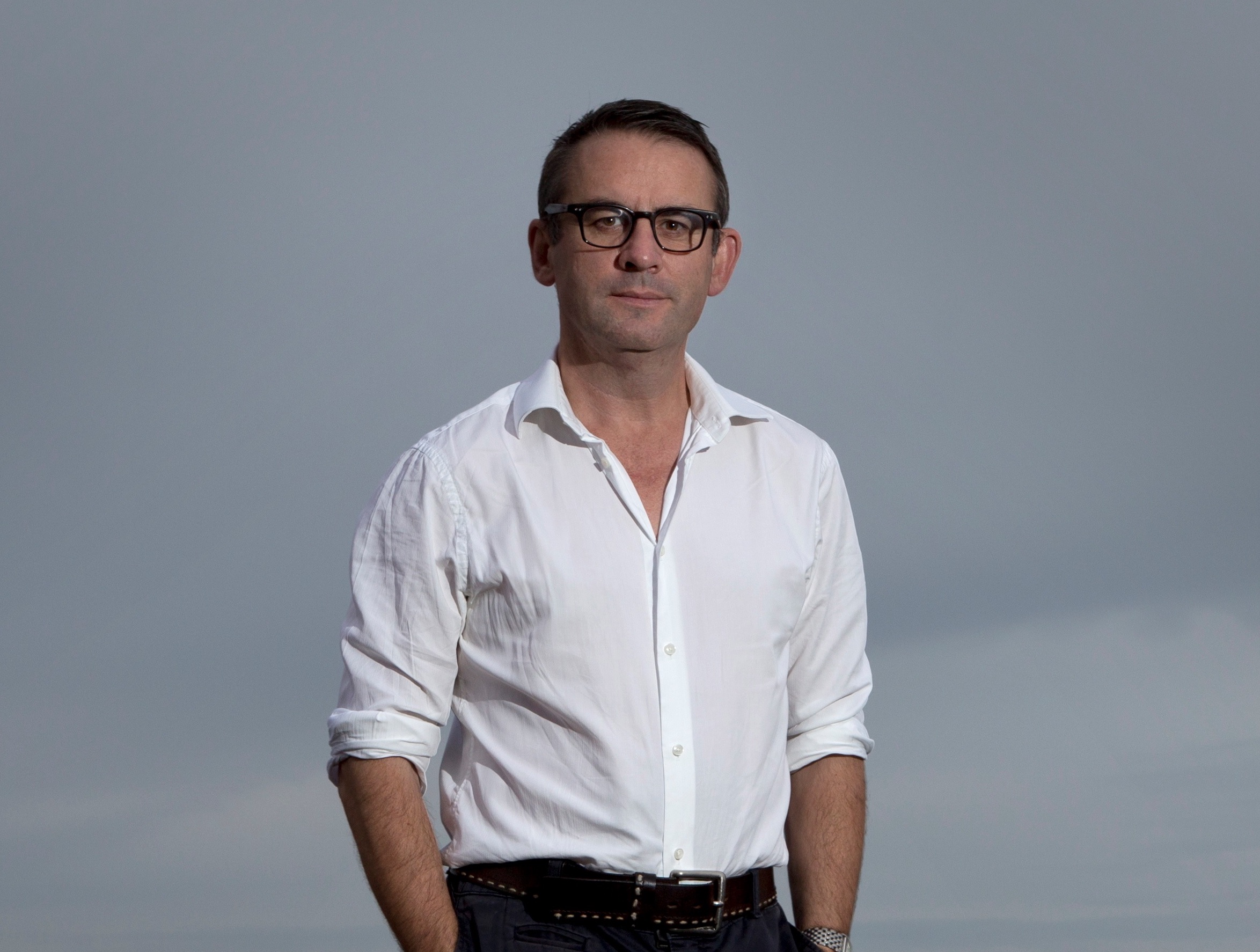To join music from centuries ago to compositions of today shows how that bond in music holds us keen. No matter what period some music comes from, it can sound fresh and innovative. The programming for this concert proved how good music can work together, regardless.
 Paul Kildea. Photograph © Penny Bradfield
Paul Kildea. Photograph © Penny Bradfield
Beginning with Mozart’s The Marriage of Figaro Overture, award-winning conductor, author and Canberra native Paul Kildea energetically led the Canberra Symphony Orchestra (CSO) through this romp of an overture to this ‘disguise and expose’ comic opera. Hearing this lively overture makes you want to experience the whole opera.
This was the first time Kildea had conducted the CSO – the very first orchestra he ever heard play live, which he said changed his life and led him into conducting.
Joaquín Rodrigo’s Concierto madrigal for two guitars and orchestra played by Slava and Leonard Grigoryan is a work rarely performed, but it shouldn’t be. Full of lively Spanish dance rhythms this ten-part piece begins with a model of the Toccata from the opening of Monteverdi’s L’Orfeo. The immediate strumming on guitars and pizzicato strings sets up the rhythm. It then burst into a fanfare of flourishes on woodwind and brass.
The guitars of the Grigoryan brothers that were slightly amplified brought their playing front and centre of the orchestra, which helped to expose the energy and quality of their performance.
The profound stillness in the second part immediately contrasting the first gave notice that this was no ordinary piece of music. The almost contemporary sounds created through the sparse and colourful orchestration had tunes and rhythms evolving and blending into one another.
The unique and subtle arrangement of this madrigal had the audience held raptured in music of searing beauty. One part had just the two guitars for several minutes until right near the end when the orchestra jumped in to cap off their brilliant playing. The Grigoryan brothers make everything looks so easy. Towards the end, echoes of the Concierto de Aranjuez were heard before the audience let loose with rounds and rounds of applause.
After the interval, we moved from two guitars to two cellos for the world premiere of a work by Kenneth and Kirsten Lampl titled To the Memory of Nelson Cooke: an Elegy for Cello and Orchestra, played by David Pereira and the 15-year-old Benett Tsai who previously studied under Pereira.
Kenneth Lampl who studied composition and conducting with John Williams was also head of the Australian National University (ANU) School of Music for the past two years. He explained in a pre-concert talk that the piece was composed as a lament for the loss of a great artist, and a celebration of the Canberran conductor Nelson Cooke. Cooke was one of the founding members of the ANU School of Music. This work is meant to represent Cooke as a person and the love he had for music, spoken through the voices of the two cellos.
The warm harmonious sounds of the strings with cello coming in over the top in this movie-like music instantly spoke of a tender memory that the Lampl’s wanted people to feel for Cooke. The swirling theme grew as the wind and brass came in with percussion hitting the high points to fill the hall with a deep soulful resonance. Pereira and Tsai combined wonderfully in this heartfelt piece as they ended up high on a long soft note. Both the Lampl’s were in the audience and were acknowledged by the conductor and players.
Beethoven’s musical language is a clear and recognisable statement as much of the art is by the great painters of the world. His Symphony No 8 in F major, Op. 93 has full orchestra hits balanced against playful motives for woodwind to the thunderous timpani, and then onto dance tunes that all say, ‘I am Beethoven, you must listen’.
His eighth symphony has all his trademark expressions and also explores new musical directions. The cunning and playful second movement has sections of the orchestra speaking against other sections. Every movement was balanced well by the orchestration and played superbly by the CSO under the conductors ever-present and energetic direction throughout.
Hearing this unique selection of music that spans centuries is a testament to how well the CSO can play from any period of music and under different conductors. The energy of the conductor was never going to be denied. The many bows the large audience demanded of him and the orchestra was justified through the selection of music and the performance.











Comments
Log in to join the conversation.